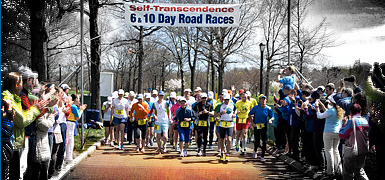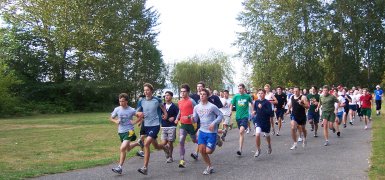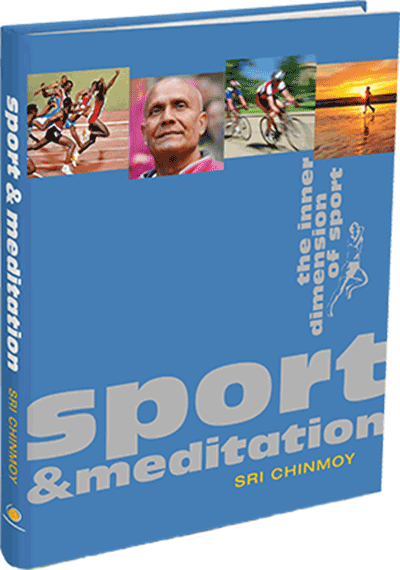Nursing a finicky IT band back to health
By Ian Abbott
February 21, 2005 -- Ian Abbott is an age-group triathlete and massage therapist who answers your triathlon health-related questions. This week, Abbott tackles a reader's painful iliotibial band and tight hamstrings.
Dear Ian,
I have a training question for you. I have problems with tight iliotibial band and tight hamstrings that are causing knee problems. I have received different suggestions for how to stretch the ITB, but they don't seem to work, or I'm not doing it right. What do you suggest?
I'm 42, female, chronic knee problems, ex-swimmer, respectable age-group triathlete -- but struggling. Any help will be appreciated.
Leigh
Leigh,
Thanks for the great question, I hope I can help. There are a fair number of triathletes (myself included) who come from a swim background. While this experience often makes for a speedy first leg of the race it can causes problems in the second and third parts of a triathlon.
You may have noticed that while the ex-swimmers in the pool usually have a pretty good kick, those from cycling and running backgrounds have a tougher time. People who grow up swimming can develop flexible ankles that provide the same flick in the kick as a fish's tale does. Runners and cyclists often tend to have less flexible ankles and feet, making them less efficient swimmers but also less prone to certain types of running injuries.
What this means for you, Leigh, is that to compensate for your greater flexibility and range of motion, your hips have to provide stability while you are running. You may have already corrected this partially with orthotics and a good shoe fit. But another factor affecting stability can be pelvic strength. The muscles in the hips and low back are important for pelvic stability, and the gluteus medius is often involved in IT band problems.
The gluteus medius originates in the outer rim of the pelvis and inserts onto the superior aspect of the greater trochanter at the top of your femur. It functions to abduct the leg, or move it away from the midline, and it plays an important role in providing lateral hip stability. Runners tend to be very strong going straight forward but lack the lateral strength of tennis and basketball players. A weakness in the gluteus medius means that another muscle, called the Tensor Facsia Latae (TFL), is over-recruited. The TFL, found on the front of your hip and slightly to the outside, acts to provide knee stability by working with gluteus maximus to contract the Iliotibial band. So, if your gluteus medius is weak, your TFL has to work too hard, increasing the tension on your IT band, which can result in problems at the knee. This can cause unwanted tension through the hips, low back and hamstrings and can also result in increased tension through the hip flexors, which can tilt the pelvis forward, making the hamstrings feel tight even though they actually being overstretched.
Here are a couple of stretches and an exercise that hopefully will get you on the right track.
Stretch #1: Hips and IT band
Place your body at such a distance from a wall that you feel a mild pull at your hip, down your IT band or both. As the stretching sensation eases, move your body closer to the wall. But remember, stretching always needs to be done pain free. Stretch both sides for at least 30 seconds to a minute. I like this stretch because you can get into it and relax or read a book or watch TV and spend some time with it.
Photo by: courtesy Ian Abbott
Stretch #1: Hips and IT band
Stretch #2: Hamstrings
This hamstring stretch is good because you are not weight bearing, so you don't end up overloading the hamstrings as when you bend over and touch your toes. Using a belt or strap, pull your leg toward you with the knee slightly bent. The other leg should be flat on the floor. Hold the stretch for 30 seconds to a minute.
For a twist, try this: When you have pulled on the strap to the point where you feel a mild pull in the hamstring, push your leg against the strap. Don't let your leg move, simply push into the resistance. Count for six seconds and relax. At this point you can pull your leg further into the stretch. You can do the contract relax two to three times while stretching.
Photo by: courtesy Ian Abbott
Stretch #2: Hamstrings
Clamshell exercise
This exercise will help strengthen the gluteus medius.
1) Position yourself in a three-quarter-prone pose with your arm under your head for support. Keeping the lower leg straight, bend the knee of the upper leg and hook your foot behind the knee of the lower leg.
2) Start with the knee of the upper leg on the ground.
3) Slowly lift the knee of the upper leg just past horizontal, then lower back to the ground. Start with about 10-15 reps on each side and increase by 5 reps per week as it becomes easier.
Photo by: courtesy Ian Abbott
Clamshell exercise
Ian Abbott is a Victoria, Canada-based triathlete and massage therapist who works out of out of the Cedar Hill Sports Therapy Clinic. In his seven years of practice he has worked with members of Canada's national triathlon, swimming, rowing cycling, and cross-country ski teams. Ian trains with Olympian Samantha McGlone plus Kelly "Mountain Man" Guest under the wise and watchful eye of Cliff English at Competitive Edge Training.
If you have a multisport-related wellness-related question for Ian, please e-mail Triathlete Magazine Interactive.




